IOM Ballast Bulbs
Some time ago I did some calculations on the drag of an IOM bulb as a function of the bulb diameter to length ratio. At the top of the A rig range the boat speed to windward is about 2.2 knots, and to windward the side force requires a lift coefficient of the keel of about 0.2. Based on this the drag due to the bulb was calculated for various diameter/length ratios of the bulb. The strange thing was that the drag just kept dropping as the bulb was made longer and thinner.
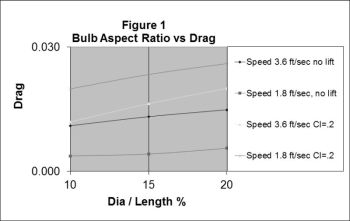
Now I though this a very strange result. I was hesitant to talk about it until I found that Graham Bantok had done the same thing and got the same answer (in his Seahorse article); also Gary Cameron on Lester Gilbert’s site reported a significant increase in speed downwind by changing from a 45mm diameter bulb to a 300mm x 41mm diameter one.
To understand what is happening here it is useful to think of bulb drag as two parts, one depending on frontal area and one on skin friction (depends on skin area x skin friction coefficient). Long thin bulbs have a lower frontal area but more skin area than short thick bulbs. At the length and speed of full size boats the skin friction coefficient is not very dependant on the length, being more affected by surface roughness, so as the bulb is made longer the frontal resistance decreases but the skin friction resistance increases, and this trade off means one can estimate an optimum length/diameter ratio. The optimum for big boats turns out to be relatively short fat bulbs to model yacht eyes.
At the speed and size of model boats however, the skin friction coefficient actually decreases as the length of the bulb increases and this effect is enough to overcome the increase in surface area, so both skin friction resistance and frontal area resistance decrease as the bulb length increases,
Does this mean that we should all have pencil thin 1metre long bulbs? Well, such a thing would be structurally unsound and something of a menace.
There are three main arguments against a long bulb aside from practicalities: firstly there is an increase in pitching moment, secondly the ends of a long bulb move up and down through the water faster when pitching or turning creating drag and thirdly a longer bulb has more rotational inertia and is likely to cause rotational distortion of the keel when manoeuvring or under wave motion.
There is another aspect: some simple tests using soluble paint on a keel and then on the combined keel and bulb of the Blowfly suggested that the bulb makes a very effective endplate for the keel. As the bulb diameter is reduced then eventually this effect will reduce.
All these sound plausible arguments but boats with the longer keels keep winning the big events, so at least those keels are not too long! Graham Bantok notes that IOMs have a large pitching inertia anyway, and a longer bulb represents a very small incremental increase.
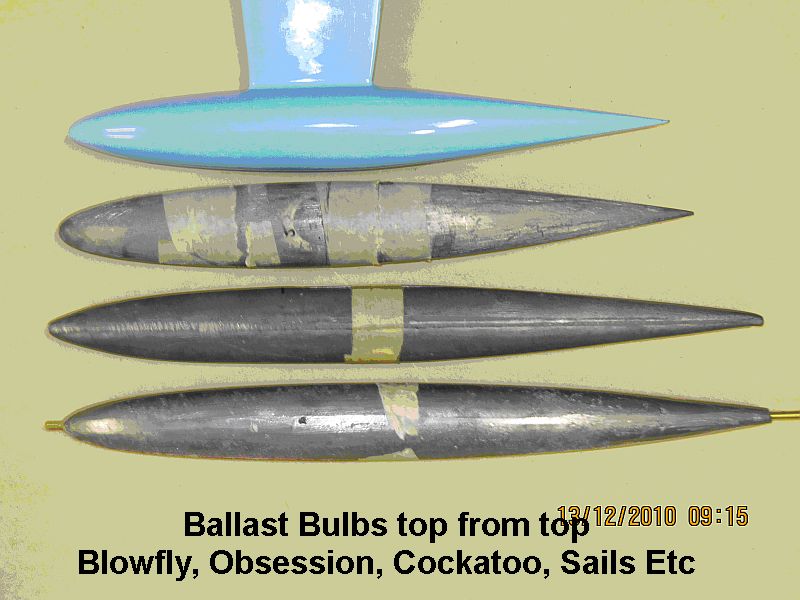
Graham Bantok’s article also suggested that a “consensus” limit was about 10% which implies a bulb about 370 to 375mm long depending on the section used, however his bulbs are actually only 340mm long. The photo shows various commercial bulbs: top to bottom, Blowfly (285mm), Obsession (300mm long) then Cockatoo and Sails Etc (340mmlong). The Blowfly and Cockatoo bulbs have chisel trailing edges, which are certainly less prone to damage. Scott Berry (Blowfly) says it helps stop nosediving.
©Colin Thorne December 2009
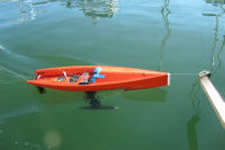
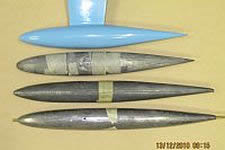
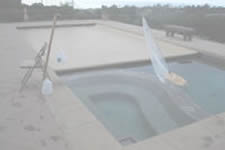
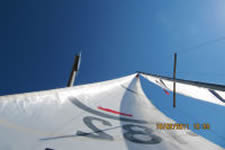
 Keels Etc
Keels Etc